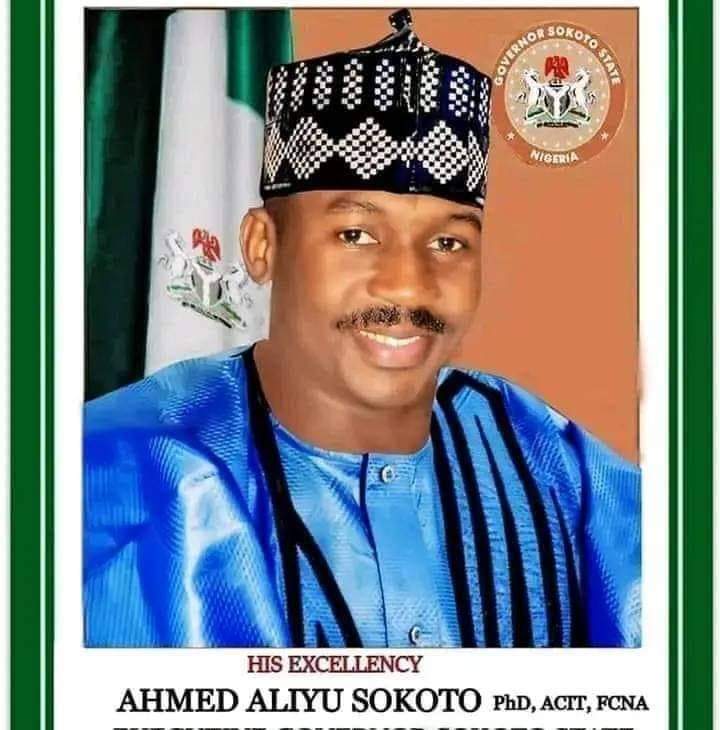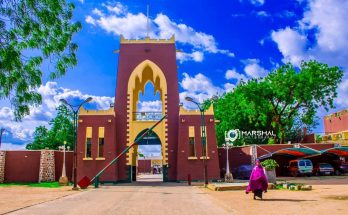It should be a good development in Sokoto state that the new Governor Ahmed Aliyu is laying the foundation stone of 500 new houses being by his administration as part of his 100 days in office celebration. As someone, who pledged to continue the “people-oriented” policies of his mentor and former governor of the state, now Senator Aliyu Magatakarda Wamakko, Aliyu’s housing scheme recalls the one started by his godfather several years ago in Kalambaina, located in the same area as Aliyu’s project.
The prayer of the people of Sokoto state, however, is that the new houses will be built from foundation to occupation and Aliyu will not emulate his master, by abandoning site, as was the fate of three such projects by Wamakko; the 500 units in Kalambaina (which his successor had to complete from halfway to roofing), another 500 houses at Gidan Salanke in the same street and the flood victims quarters at Goronyo and Silame villages.
Incidentally, since Aliyu’s 100 days fiesta features the distribution of aid to flood victims, the gesture would go beyond mere ceremonies, if the governor pledged to continue the 500 houses started by Wamakko at Goronyo only to commission them as completed, after barely finishing a handful of the units facing the highway.
In fact, if Governor Aliyu would solely focus on finishing the projects abandoned by Wamakko, he would have a very busy but productive first term. Aminu Waziri Tambuwal (now senator), who succeeded Wamakko, decided to do so but his first term proved to be too short for the endeavour, even though he completed many of such moribund projects.
Tambuwal had to complete the School of Legal Studies in Wamakko, Sokoto Conference Center from foundation, College of Agriculture and Animal Science, Wurno (which Wamakko commissioned at barely 50% stage) and Assare Water Works in Wamakko, while endeavouring to finish over 30 road projects he inherited from Wamakko, which was actually the last count announced by Aliyu, when he was Tambuwal’s deputy and in charge of the Ministry of Works.
In spite of his commitment to salvaging abandoned projects, Tambuwal was compelled to leave some uncompleted Wamakko legacies because they were either financially insolvent or mired in scandal. These include the extension of Usman Faruk Secretariat, Goronyo and Silame Flood Victims Houses, Independent Power Project, which had gulped over N6 billion under Wamakko and required an additional N2 billion to finish and Murtala Mohammed Hospital (which Wamakko commissioned as completed at a whopping N2 billion).
Wamakko’s unfortunate successor faced these challenges against a more daunting difficulty: he allegedly inherited an empty treasury! A Daily Trust story in 2015, early into Tambuwal’s first term, captured the situation, when it reported that, “it was speculated that he inherited an empty treasury from his predecessor, Aliyu Magatakarda Wamakko, and he has to devise ways of meeting the expectations of his people.
“It would be recalled that during the handover ceremony, Wamakko was silent on the issue of finances of the state.”
If, therefore, Aliyu insists on following the footsteps of his “father”, that would leave the people with no positive expectations but great foreboding about what his administration sets out to achieve. Meanwhile, the highlight of his 100 days in office programmr is the commissioning of the road leading to his mentor’s residence in Gawon Nama Area in Sokoto, laying the foundation for a proposed housing project in Wamakko, and beautification of the street approaching the Government House and his own neighbourhood at Junaidu Road.
A rather positive side of Aliyu’s performance so far, besides the setting up of numerous probes on his predecessor’s government, is the ongoing completion of the flyover at Rijiyar Dorowa, which was started by the previous administration. That, however, is expected to be an easy task because Aliyu inherited the project at 99% stage with the remaining contract funds still intact.
Completing inherited projects is likely to be an easy task for Aliyu, as most of the constructions are at the last lap and their funding is still accessible. These are the State University Teaching Hospital, three premier hospitals, one in each senatorial district and the dual carriage bridge on River Rima in Sokoto have all reached over 90% of completion.
That is more an obligation for Aliyu, who has already taken interest in projects like the teaching hospital, through the hasty cancelation of its previous naming by the Tambuwal government as a mark of his coming to power, barely a week after his swearing in. Completing the institution and giving the name of his desire will prove that the new governor can also build, rather than only destroy.
While Tambuwal’s projects will not pose a problem to his successor, his major challenge is dealing with the abandoned, crisis-ridden legacies of his mentor, Wamakko. If Aliyu wishes to match his words with action, he should complete those projects as a mark of belief in and loyalty to his master.
A defining element of Governor Aliyu’s philosophy on governance is what appears to be his subservient notion of his rise to leadership. In a recent statement, he expressed the conviction that he and all the other APC candidates, who won in the 2023 elections in Sokoto state, were voted solely by the grace of what he referred to as Wamakko’s good style of governance, rather than their personal capacity and acceptance among the electorate.
After 100 days as governor, Aliyu is still in the shadow of his master and has resolved as ever to toe his line, emulate his style of governance and replicate his policies and programmes. That is to the chagrin of a majority of the people of Sokoto state, who recall Wamakko’s era of projects and programmes that were unfinished, bequeathing a financial mystery that has remained unresolved for the past eight years.
Dr Sidiq writes from Sama Road, Sokoto




